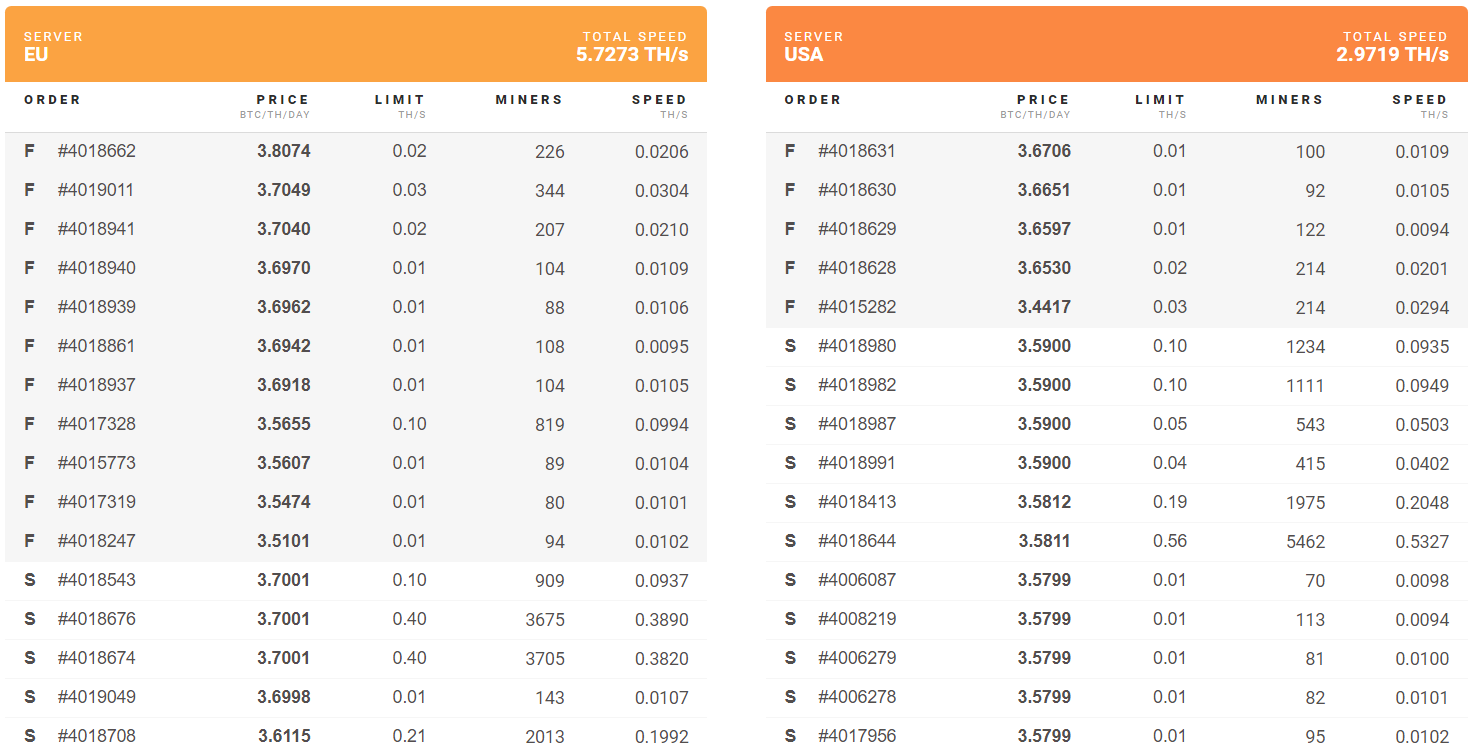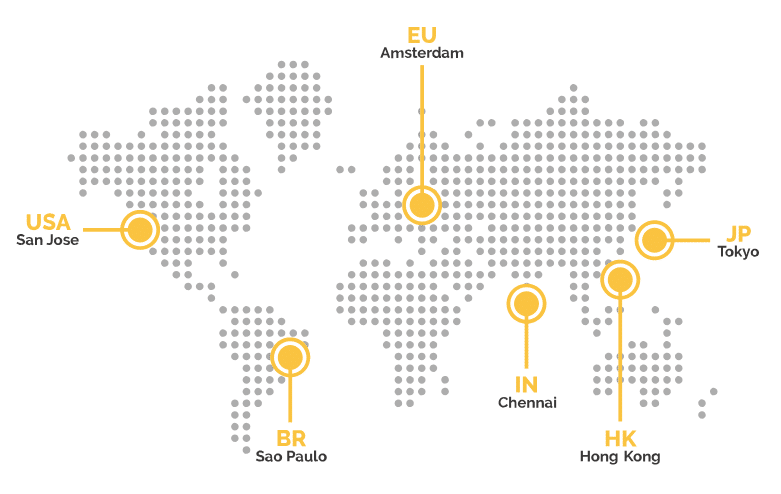- What Is NiceHash?
- Is NiceHash an Effective Solution for ETH mining?
- Ethereum Mining Algorithm
- NiceHash Installation Options
- Checking Support, Considering Profitability
- Payouts
- Hashing: Buyers and Sellers
- NiceHash Buying and Selling Fees
- Withdrawal and Deposit Fees
- NiceHash Competitors
NiceHash has become one of the most popular ways to mine Ethereum (ETH). Whether you’re new to mining or an experienced miner looking to use NiceHash, here are a few things you should know about using this cloud mining software.
What Is NiceHash?
Based in Slovenia, NiceHash is the world’s largest crypto mining marketplace. This platform connects sellers (a.k.a. miners) of hashing power with buyers of hashing power.
Looking at the NiceHash website, the company boasts a lot of impressive stats. It has greater than 332,000 daily active workers, 109,000 miner users, 4,009,000 orders, and 192,000 BTC in payouts.
In addition to supporting Ethereum mining, NiceHash also supports a variety of other mining algorithms. This means that it supports Bitcoin, Zcash, Litecoin, and many others.
Is NiceHash an Effective Solution for ETH mining?
According to various online reviews, NiceHash offers one of the quickest and most convenient ways to mine Ethereum. With NiceHash miners, the process of choosing the optimal algorithm to hash can be automated.
Ultimately, it doesn’t matter whether or not Ethereum is the most efficient option. Essentially, the software removes a lot of the guesswork and strategy typically involved in choosing a specific algorithm and coin to mine. This also means that you have more versatility with NiceHash than without it. One potential downside is that various users have reported that the hashing rate might be lower with NiceHash compared to other options on the market.
Ethereum Mining Algorithm
Ethereum 1.0 once used Dagger-Hashimoto as its go-to mining algorithm. Since then, Ethereum has upgraded to Ethash. Nevertheless, you’ll notice on the NiceHash website that Ethereum mining with this platform still relies upon Dagger-Hashimoto.
The good news is that the NiceHash website includes instructions for connecting the necessary ethminer software. This includes AMD GPUs, NVIDIA GPUs, and Linux build instructions. It even has instructions for connecting to two different server locations: the EU and the US.
[thrive_leads id=’5219′]
NiceHash Installation Options
The first step towards renting out space on your computer and earning cryptocurrency is to check whether or not your device meets the minimum hardware requirements needed to download the NiceHash Miner. Note that NiceHash Miner only supports desktop GPUs with CUDA compute capability 5.0 and above.
In order for NiceHash Miner to be detected, GPU NVIDIA drivers 387.26 or newer need to be installed. AMD graphics cards are not supported by NiceHash Miner, so you’ll need to download the NiceHash Miner Legacy instead. The software supports CPUs with AES and SSE42 features/instruction sets. There are currently no plans to allow CPUs without these features/instruction sets to run NiceHash.
Checking Support, Considering Profitability
If you’re unsure whether your PC can run the software, the best way to test this is to first download the miner. Second, you should run the benchmark, which will give you a good idea of whether or not using NiceHash is practical (or even possible) with your system.
Finally, you should check out the profitability calculator to determine estimated earnings or losses. In many cases, your hardware option won’t be profitable. Of course, this varies depending on electric costs, hardware device types, and cryptocurrency prices.

Payouts
One of the most important aspects to consider when mining Ethereum, or any other cryptocurrency, with NiceHash is the form of payout. You might think that since you’re mining ETH, payouts will be in ETH. This is not the case with this specific platform.
BTC is the only form of payment on NiceHash, regardless of which crypto you decide to mine. This means that, if you want to get ETH, you’ll need to use a cryptocurrency exchange to convert your BTC funds.
Hashing: Buyers and Sellers
While competitors mostly sell monthly subscriptions, NiceHash doesn’t. The minimum amount you need to begin mining Ethereum is 0.005 BTC. Using the site, you’ll find that contracts are listed as an amount of BTC per day. However, you can also create a contract for greater than or less than one day.
The site offers two options for bidding on hash rate purchases: standard bidding and fixed price. Essentially, the fixed price option will likely cost more than standard bidding but simplifies the process of finding a match. By choosing standard bidding, there is the possibility that you might be outbid by another user.

NiceHash Buying and Selling Fees
Whether you’re buying and selling hashing power for ETH or another cryptocurrency, you’ll need to be aware that all fees are calculated in BTC.
Buyers: There is a non-refundable order submission fee of 0.0001 BTC. The amount spent on orders for buying hashing power (unspent amount on canceled orders is not subjected to this fee) is 3 percent.
Sellers: Payouts fees for balances less than 0.1 BTC to an external wallet are 5 percent. Balances greater than or equal to 0.1 BTC to an external wallet have 3 percent fees. Payouts for balances greater than or equal to 0.001 BTC to a NiceHash wallet are 2 percent.
Withdrawal and Deposit Fees
For withdrawals from 0.001 (minimum amount) to 0.1 BTC to any Bitcoin wallet, there is a fee of 0.0001 BTC. If the withdrawal is greater than 0.1 BTC to any Bitcoin wallet, the fee is 0.1 percent of the withdrawn amount. Those looking to exchange funds via Coinbase can do this quite easily. Most importantly, there is no fee for any amount sent over 0.001 BTC to a Coinbase wallet.

NiceHash Competitors
When it comes to mining Ethereum, there are other options besides NiceHash. For example, you could decide not to join a mining pool altogether. However, miners with a limited number of rigs typically don’t choose to do this as there are lower odds of solving the algorithm and receiving rewards.
Even though NiceHash is the most popular choice, a few other major competitors exist. Nanopool, for example, has over 130,000 active miners. Fees are only 1 percent. Plus, Nanopool pays out for uncle blocks. This means that if your rig(s) were at least close to solving the algorithm, you can expect to receive some reward. Ethermine provides another solution. It has over 75,000 active miners. It also has 1 percent fees and pays uncle blocks.
Never Miss Another Opportunity! Get hand selected news & info from our Crypto Experts so you can make educated, informed decisions that directly affect your crypto profits. Subscribe to CoinCentral free newsletter now.










